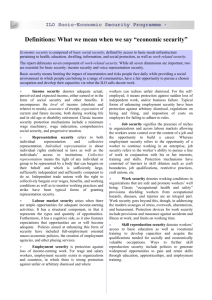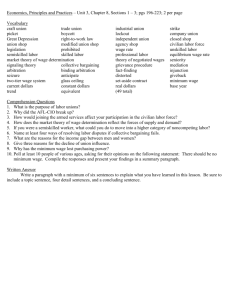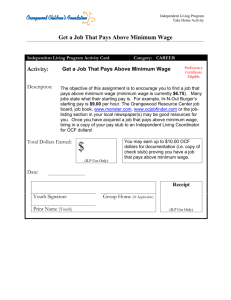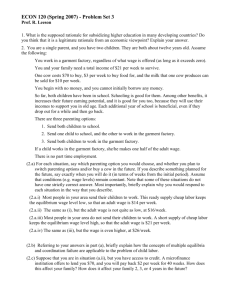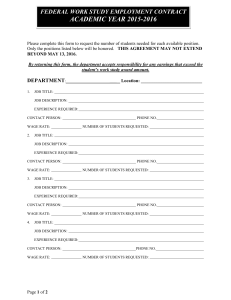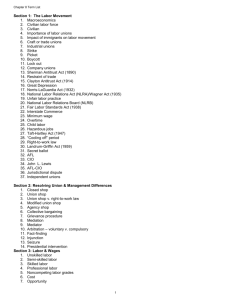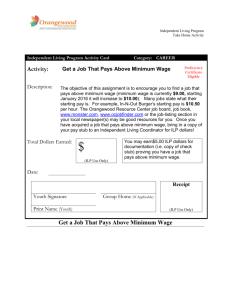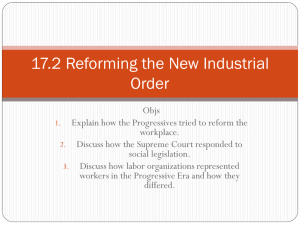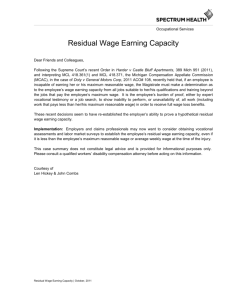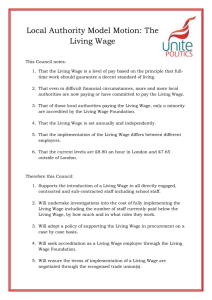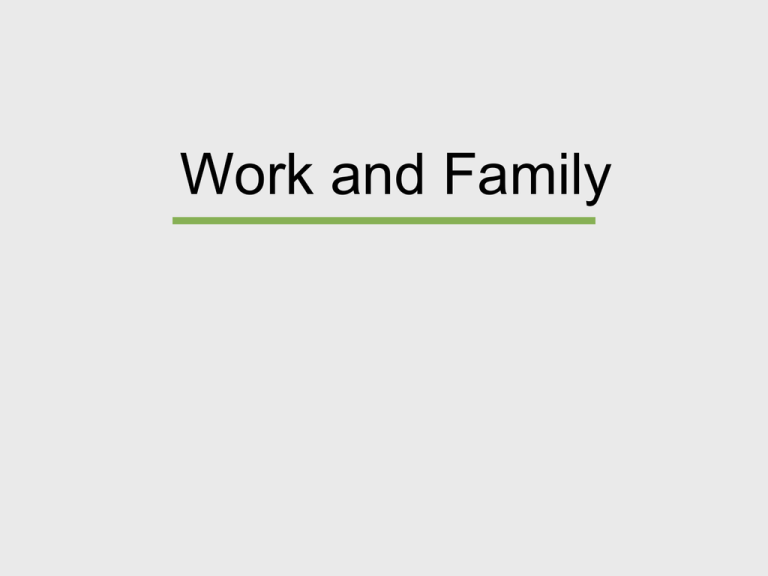
Work and Family
Men’s Work and Family Roles
Good Provider Role: the economic
provider of the family predominated into
the 1970s
Men work more hours and are more likely
to work full-time.
“Involved Fathers”
Stay at home dads:
Women’s Work and Family
Roles
Women’s involvement in the workforce really
took off in the 20th century.
Women’s Occupations
Occupational segregation: pronounced
tendency for men and women to be
employed in different types of jobs
Jobs typically held by men and women
differ within major occupational
categories, with men more likely to hold
the upper-level jobs.
The Female-Male Wage Gap
The wage gap is the difference in earnings
between men and women.
For instance, in 2011 women corporate chief
executive officers (CEOs) averaged $1,464
weekly, compared with $2,122 for men.
Motherhood has a tremendous negative lifetime
impact on earnings.
Women’s Dual Role
Despite their increased visibility in the
labor force, women are still seen as
primarily responsible for the family and its
well-being
Women and Stress Levels
Women’s workload is higher than men when
taking into account work and home work hours
Given the demands on women when combining
employment and familial roles, many women
experience inter-role conflict and/or role
overload to a greater extent than men
Unique Stressors to Women
Women have fewer higher status positions, are
less upwardly mobile and in general have lower
salaries
Women are more likely than men to face pay
inequity, sexual harassment, underutilization of
skills, and sex discrimination in performance
All of these have been associated with a variety
of stress symptoms
Juggling Employment and
Family Work
: Dual-Earning Family
Work-Family Conflict
Conflict due to work interfering with family
Work-related activities interfere with home
responsibilities (e.g., taking work home)
Family-Work Conflict
Conflict due to family interfering with work
Family responsibilities interfere with work
activities (e.g., an employee having to cancel
a business meeting because a child is
suddenly ill)
How Common is WFC?
3.7 million working adults describe their day-today lives as highly stressful (Statistics Canada,
2011)
66% – 75% of wage and salary employees in the
United States felt they did not have time to be
with children, their spouses/partners, and to
spend on themselves (Matos & Galinsky, 2011)
Since 1996, between 46% and 61% of parents
have a hard time juggling work and family
(Barrette, 2009)
How Do Employees Cope With
Competing Work & Family Demands?
Social Support
work-related (organizational,
supervisors & coworkers)
family/friends
Individual Coping Strategies
Interventions to
Ease W-F conflict
Proposed Interventions to
Ease W-F conflict
Organizational programs to assist employees in balancing
work and family life
Flexibility in work schedules is associated with less work to
family conflict





